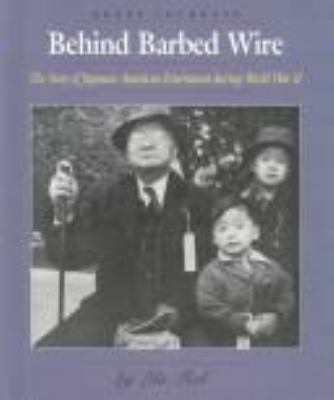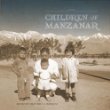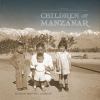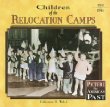-
-
2013., Juvenile, Abrams Books for Young Readers Call No: 796.357 MOS Availability:1 of 1 At Location(s) Summary Note: Presents a biography of Kenichi Zenimura, who became one of the United States' earliest Japanese-American baseball players. Discusses how Zenimura and his family were affected by the internment of Japanese Americans during World War II and traces his modern legacy.
-
-
2013., Abrams Books for Young Readers Call No: J 796.357 Moss Availability:1 of 1 At Location(s) Summary Note: Story of Kenichi Zenimura bringing baseball to a Japanese internment camp during World War II.
-
-
2013., Abrams Books for Young Readers Call No: 796.357 Availability:1 of 1 At Location(s) Summary Note: Traces the childhood dream of Japanese-American baseball pioneer Kenichi Zenimura of playing professionally and his family's struggles in a World War II internment camp where he organizes baseball teams to raise hope among the inmates.
-
-
c1993., Lee & Low Call No: [Fic] Edition: 1st ed. Availability:1 of 1 At Location(s) Summary Note: A Japanese American boy learns to play baseball when he and his family are forced to live in an internment camp during World War II, and his ability to play helps him after the war is over.
-
-
p1994., Juvenile, 001008, Spoken Arts Call No: Historical Gold Fic. MOCHIZUKI Availability:1 of 1 At Location(s) Summary Note: A Japanese American boy learns to play baseball when he and his family are forced to live in an internment camp during World War II, and his ability to play helps him after the war is over.
-
-
c1993, Juvenile, Lee & Low Call No: SC FIC MOC Edition: 1st ed. Availability:1 of 1 At Location(s) Summary Note: A Japanese American boy learns to play baseball when he and his family are forced to live in an internment camp during World War II, and his ability to play helps him after the war is over.
-
-
c1993, Juvenile, Lee & Low Call No: SC FIC MOC Edition: 1st ed. Availability:1 of 1 At Location(s) Summary Note: A Japanese American boy learns to play baseball when he and his family are forced to live in an internment camp during World War II, and his ability to play helps him after the war is over.
-
-
c1993., Lee & Low Call No: Fic Edition: 1st ed. Availability:1 of 1 At Location(s)View cover image provided by Mackin Summary Note: A Japanese American boy learns to play baseball when he and his family are forced to live in an internment camp during World War II, and his ability to play helps him after the war is over.
-
-
c1982., Juvenile, Dutton Call No: 940.54 72 73 Edition: 1st ed. Availability:1 of 1 At Location(s) Summary Note: Discusses the forced internment of Japanese Americans in camps following the attack on Pearl Harbor, their way of life there, and their eventual assimilation into society following the war.
-
-
By Perl, Lila2003., Benchmark Books / Marshall Cavendish Call No: 940.5317 PER Availability:1 of 1 At Location(s) Series Title: Great journeysSummary Note: Discusses the forced internment of Japanese-Americans in camps following the attack on Pearl Harbor and the entry of the United States into World War II.
-
-
By Perl, Lila2003, Benchmark Books Call No: 973 .004956 Availability:1 of 1 At Location(s) Series Title: Great journeysSummary Note: Discusses the forced internment of Japanese-Americans in camps following the attack on Pearl Harbor and the entry of the United States into World War II.
-
-
2022., Adolescent, Scholastic Press Call No: HISTORICAL F INO Edition: First edition. Availability:1 of 1 At Location(s) Summary Note: With the recent death of her mother and the possibility of her family losing their farm, Samantha Sakamoto does not have space in her life for dreams, but when faced with prejudice and violence in her Washington State community after Pearl Harbor, she is determined to use her photography to document the bigotry around her.
-
-
c2010., Marshall Cavendish Children Call No: 940.2 PAT Edition: 1st ed. Availability:1 of 1 At Location(s) Summary Note: Fourteen-year-old Louise keeps a scrapbook detailing the events in her life after her best friend, a Japanese-American girl, and her family are sent to a relocation camp during World War II.
-
-
1993., Philomel Books Call No: 398.2 UCH Availability:1 of 1 At Location(s) Summary Note: Emi, a Japanese American in the second grade, is sent with her family to an internment camp during World War II, but the loss of the bracelet her best friend has given her proves that she does not need a physical reminder of that friendship.
-
-
2012., Heyday ; Manzanar History Association Call No: WWII Availability:1 of 1 At Location(s) Summary Note: Brief essays and captioned black-and-white photographs document the experiences of Japanese American children and young adults at the Manzanar War Relocation Center.
-
-
c2012., Manzanar History Association Call No: 940.53 CHILDREN Availability:1 of 1 At Location(s) Summary Note: Examines the history and results of Executive Order 9066, when during World War II over a hundred thousand Japanese Americans were relocated to the Manzanar internment camp, through photographs and remembrances of the men and women relocated.
-
-
2000., Juvenile, Carolhoda Books Call No: 940.53 161 Availability:1 of 1 At Location(s) Series Title: Picture the American pastSummary Note: Explores the experiences of Japanese American children who were moved with their families to relocation centers during World War II, looking at school, meals, sports, and other aspects of camp life.
-
-
2014., Pre-adolescent, Scholastic Press Call No: FIC LARSON Availability:1 of 1 At Location(s) Summary Note: When her family is forced into an internment camp, Mitsi Kashino is separated from her home, her classmates, and her beloved dog Dash; and as her family begins to come apart around her, Mitsi clings to her one connection to the outer world--the letters from the kindly neighbor who is caring for Dash.
-
-
2022., Adolescent, Scholastic Focus Call No: HI-INT 341.6 GOL Edition: First edition. Availability:1 of 1 At Location(s) Summary Note: "On December 7, 1941--'a date which will live in infamy'--the Japanese navy launched an attack on the American military bases at Pearl Harbor, Hawaii. The next day, President Franklin Roosevelt declared war on Japan, and the US Army officially entered the Second World War. Three years later, on December 18, 1944, President Roosevelt signed Executive Order 9066, which enabled the Secretary of War to enforce a mass deportation of more than 100,000 Americans to what government officials themselves called 'concentration camps.' None of these citizens had been accused of a real crime. All of them were torn from their homes, jobs, schools, and communities, and deposited in tawdry, makeshift housing behind barbed wire, solely for the crime of being of Japanese descent. President Roosevelt declared this community 'alien,'--whether they were citizens or not, native-born or not--accusing them of being potential spies and saboteurs for Japan who deserved to have their Constitutional rights stripped away. In doing so, the president set in motion another date which would live in infamy, the day when the US joined the ranks of those Fascist nations that had forcibly deported innocents solely on the basis of the circumstance of their birth. In 1944 the US Supreme Court ruled, in Korematsu v. United States, that the forcible deportation and detention of Japanese Americans on the basis of race was a 'military necessity.' Today it is widely considered one of the worst Supreme Court decisions of all time. But Korematsu was not an isolated event. In fact, the Court's racist ruling was the result of a deep-seated anti-Japanese, anti-Asian sentiment running all the way back to the California Gold Rush of the mid-1800s. Starting from this pivotal moment, Constitutional law scholar Lawrence Goldstone will take young readers through the key events of the 19th and 20th centuries leading up to the fundamental injustice of Japanese American internment. Tracing the history of Japanese immigration to America and the growing fear whites had of losing power, Goldstone will raise deeply resonant questions of what makes an American an American, and what it means for the Supreme Court to stand as the 'people's' branch of government"--Provided by the publisher.





















